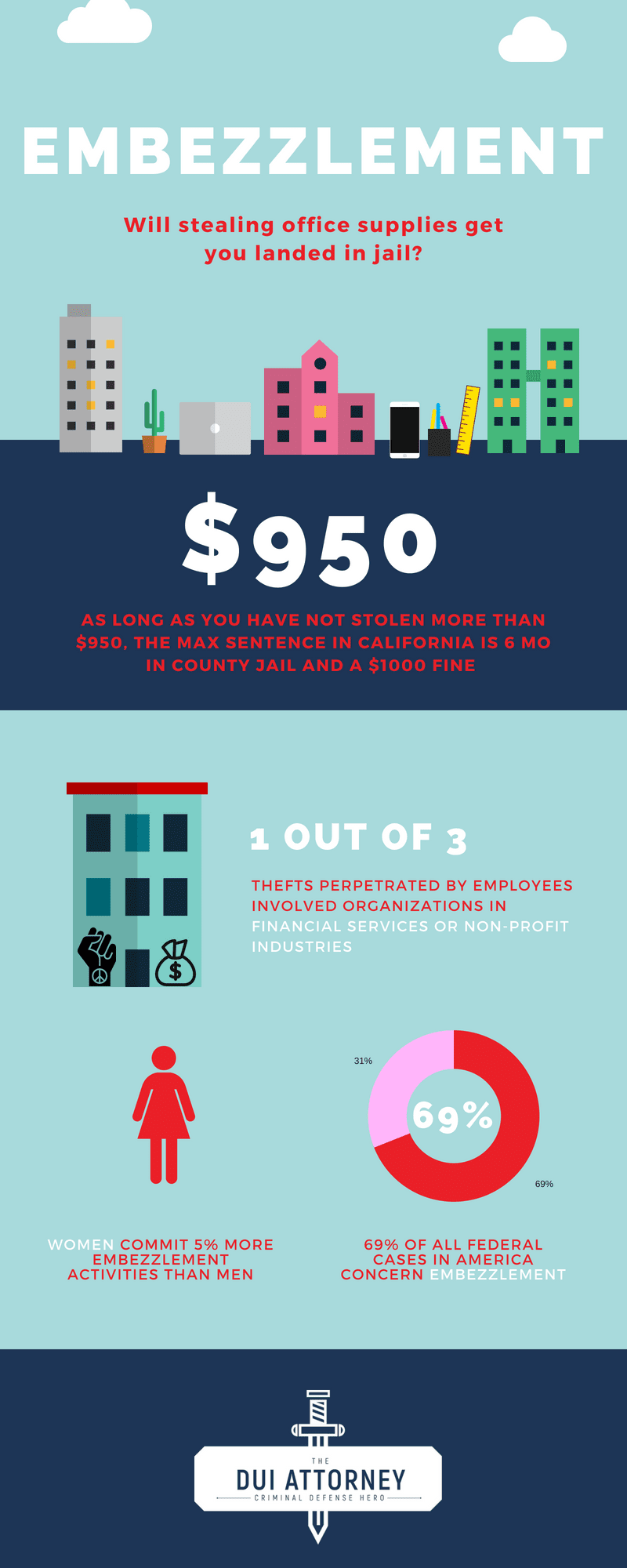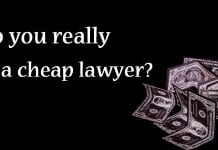Embezzlement is one of the most reported crimes in the U.S. legal system. According to a Hiscox Embezzlement Study, embezzlement represented almost 69% of all federal cases in America. Moreover, one out of every three thefts perpetrated by employees involved organizations in financial services or non-profit industries. The report also revealed that[surprisingly], women commit 5% more embezzlement activities than men. However, the most shocking revelation was the losses thought to be a result of embezzlement schemes. According to the 2015 Hiscox report, embezzlement leads to average counted losses of $809,000 per case; however, most of these range between $200,000 and $300,000.
Unless you work in the corporate world, these figures should not surprise you. Corporations tend to make so much money that some of the embezzled funds go unnoticed. This fact does not mean that embezzlement does not occur in other sectors. The scope of the criminal activity is vast, and all depends on several factors at play. But first, we should adequately understand what embezzlement entails.
Embezzlement means the misappropriation of funds or property belonging to another person by a trustee (HS 503). If an individual seeks out another to use or manage funds or property in a certain way, a trusting relationship is created. Breaking this trust by using the property or money in a way other than its intended use is the act of embezzling. We trust people with a lot of things. For instance, we trust valets with our cars, project managers with our donations, and accountants with our money. The list is endless but the rationale remains the same. This brings to light the three main elements of embezzlement.
The Elements of Trust
A trusting relationship is formed when one entrusts another with their money or property. When you are given funds or property to use in a certain way, make sure you handle money or property according to the agreed terms.
The Element of Fraud
To be convicted of embezzlement, prosecutors must prove in court that you used the money fraudulently for personal means or caused damage or loss. A loss is any breach of trust by taking advantage of the proprietor’s money to benefit oneself.
The Element of Intent to Deprive the Owner of its Use
This third element is, often, the most crucial factor in determining whether a crime has been committed in all cases. To prove intent, prosecutors must show that the accused person used the property or money to benefit/ enrich themselves or deprive the proprietor of its use.
Punishment for Embezzlement
The California Penal Code clearly outlines embezzlement and its penalties. Generally, the sentence will depend on two main factors: the value of the property and specific facts of the case. Embezzlement can be charged as either grand theft or petty theft depending on the value of the property. The penalties of embezzlement can classify as either a misdemeanor or a felony. This all depends on one’s history and the circumstances of a case.
Grand theft charges arise when the amount in question or the value of the property is more than $950. The present market value determines the value of the property at the time of the offense rather than the initial purchasing price. Grand theft embezzlement is charged as a felony or a misdemeanor depending on one’s history and the case. The penalties also vary according to the court’s overall analysis.
| Misdemeanor | Felony |
| Summary Probation
|
Formal Probation |
| Up to 12 months in a county Jail
|
16 months, 2-3 years in a county Jail |
| Up to $1,000 in fines | Up to $10,000 in fines |
On the other hand, petty theft involves the misappropriation of funds which are less than $950 in value. Readers should note that a series of petty thefts over a specified period may fall under the category of grand theft. For instance, if one steals multiple items many times within a 12 month period, and the total value of all the cases is $950 or higher, this constitutes a grand theft case under the Penal Code 489. Petty theft only warrants a maximum sentence of 6 months in county jail and a maximum fine of $1,000. If the amount in question is less than $50, the charge reduces to an infraction, which warrants a maximum penalty of $250.
White collar crimes are increasingly rampant in the U.S. and most go unreported. However, in the unlikely event you’re charged with embezzlement, Don Hammond is the perfect criminal attorney to approach. Many people will exaggerate the value of their property in the hopes of seeking higher penalties from the court, but Don Hammond at 323-529-3660 can help you determine the actual value of the property and explore possible legal defenses to the charge. Remember, it is your right to seek legal counsel and defend yourself to the best of your ability.




































